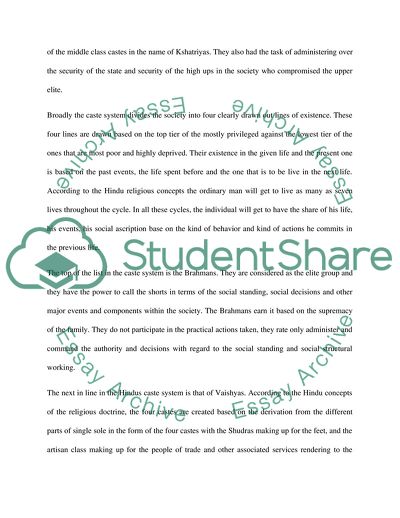Cite this document
(Secularism and Religion in Multi-Faith Societies: The Case of India Essay Example | Topics and Well Written Essays - 1250 words, n.d.)
Secularism and Religion in Multi-Faith Societies: The Case of India Essay Example | Topics and Well Written Essays - 1250 words. https://studentshare.org/religion-and-theology/1846636-the-caste-system-and-hinduism-in-india
Secularism and Religion in Multi-Faith Societies: The Case of India Essay Example | Topics and Well Written Essays - 1250 words. https://studentshare.org/religion-and-theology/1846636-the-caste-system-and-hinduism-in-india
(Secularism and Religion in Multi-Faith Societies: The Case of India Essay Example | Topics and Well Written Essays - 1250 Words)
Secularism and Religion in Multi-Faith Societies: The Case of India Essay Example | Topics and Well Written Essays - 1250 Words. https://studentshare.org/religion-and-theology/1846636-the-caste-system-and-hinduism-in-india.
Secularism and Religion in Multi-Faith Societies: The Case of India Essay Example | Topics and Well Written Essays - 1250 Words. https://studentshare.org/religion-and-theology/1846636-the-caste-system-and-hinduism-in-india.
“Secularism and Religion in Multi-Faith Societies: The Case of India Essay Example | Topics and Well Written Essays - 1250 Words”. https://studentshare.org/religion-and-theology/1846636-the-caste-system-and-hinduism-in-india.


